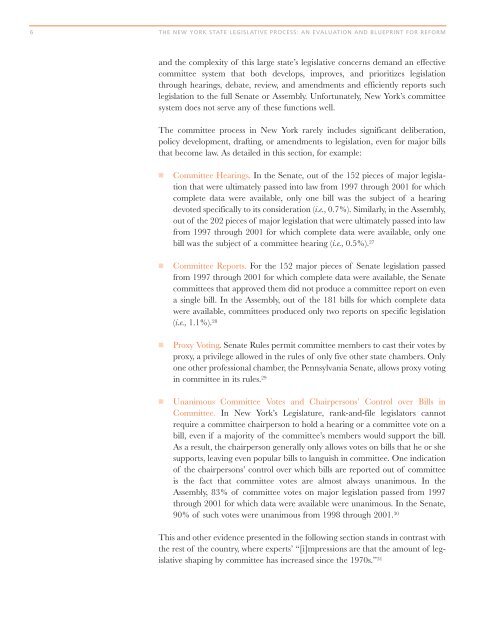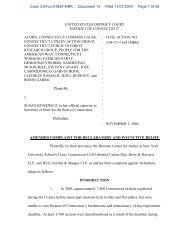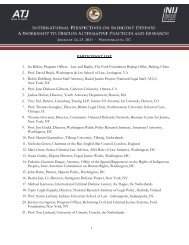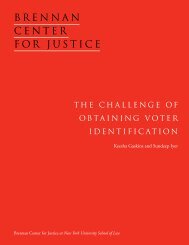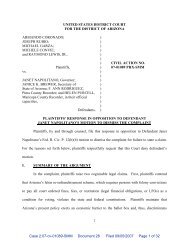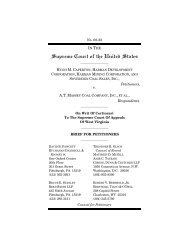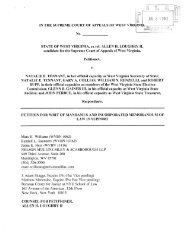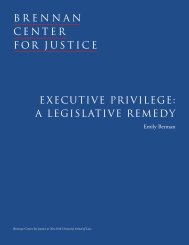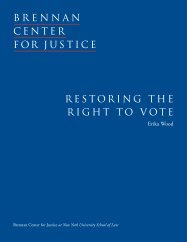THE NEW YORK STATE LEGISLATIVE PROCESS: AN ...
THE NEW YORK STATE LEGISLATIVE PROCESS: AN ...
THE NEW YORK STATE LEGISLATIVE PROCESS: AN ...
Create successful ePaper yourself
Turn your PDF publications into a flip-book with our unique Google optimized e-Paper software.
6 <strong>THE</strong> <strong>NEW</strong> <strong>YORK</strong> <strong>STATE</strong> <strong>LEGISLATIVE</strong> <strong>PROCESS</strong>: <strong>AN</strong> EVALUATION <strong>AN</strong>D BLUEPRINT FOR REFORM<br />
and the complexity of this large state’s legislative concerns demand an effective<br />
committee system that both develops, improves, and prioritizes legislation<br />
through hearings, debate, review, and amendments and efficiently reports such<br />
legislation to the full Senate or Assembly. Unfortunately, New York’s committee<br />
system does not serve any of these functions well.<br />
The committee process in New York rarely includes significant deliberation,<br />
policy development, drafting, or amendments to legislation, even for major bills<br />
that become law. As detailed in this section, for example:<br />
■ Committee Hearings. In the Senate, out of the 152 pieces of major legislation<br />
that were ultimately passed into law from 1997 through 2001 for which<br />
complete data were available, only one bill was the subject of a hearing<br />
devoted specifically to its consideration (i.e., 0.7%). Similarly, in the Assembly,<br />
out of the 202 pieces of major legislation that were ultimately passed into law<br />
from 1997 through 2001 for which complete data were available, only one<br />
bill was the subject of a committee hearing (i.e., 0.5%). 27<br />
■ Committee Reports. For the 152 major pieces of Senate legislation passed<br />
from 1997 through 2001 for which complete data were available, the Senate<br />
committees that approved them did not produce a committee report on even<br />
a single bill. In the Assembly, out of the 181 bills for which complete data<br />
were available, committees produced only two reports on specific legislation<br />
(i.e., 1.1%). 28<br />
■ Proxy Voting. Senate Rules permit committee members to cast their votes by<br />
proxy, a privilege allowed in the rules of only five other state chambers. Only<br />
one other professional chamber, the Pennsylvania Senate, allows proxy voting<br />
in committee in its rules. 29<br />
■ Unanimous Committee Votes and Chairpersons’ Control over Bills in<br />
Committee. In New York’s Legislature, rank-and-file legislators cannot<br />
require a committee chairperson to hold a hearing or a committee vote on a<br />
bill, even if a majority of the committee’s members would support the bill.<br />
As a result, the chairperson generally only allows votes on bills that he or she<br />
supports, leaving even popular bills to languish in committee. One indication<br />
of the chairpersons’ control over which bills are reported out of committee<br />
is the fact that committee votes are almost always unanimous. In the<br />
Assembly, 83% of committee votes on major legislation passed from 1997<br />
through 2001 for which data were available were unanimous. In the Senate,<br />
90% of such votes were unanimous from 1998 through 2001. 30<br />
This and other evidence presented in the following section stands in contrast with<br />
the rest of the country, where experts’ “[i]mpressions are that the amount of legislative<br />
shaping by committee has increased since the 1970s.” 31


